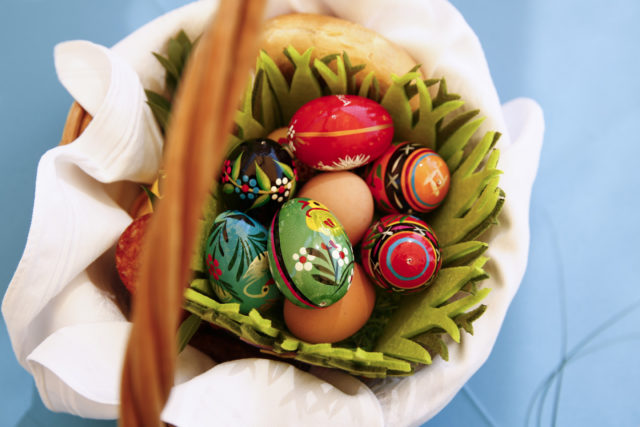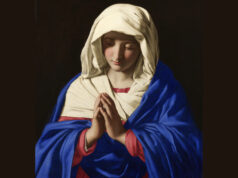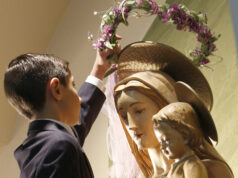
If, like many Catholics, you cringe when you see Easter merchandise at the store as soon as Valentine’s Day ends and Ash Wednesday is upon us, take heart.
Resist those ubiquitous chocolate eggs and their egg-shaped jelly bean counterparts. Keep your home free of chipper little bunnies during Lent. Then, when Easter arrives, take time to shower your home with the lavish symbols of the risen Christ and explain to your family the long, beautiful history behind those treasured traditions.

So let’s start with all those eggs. Symbolically, eggs have a long history and it’s easy to see why. To pagans, nothing more closely spoke of fertility and rebirth than an egg, that sterile and shelled little object that suddenly explodes into new life. It’s easy to see why the church adopted eggs as symbols of returning life. And those cracked and no-longer-needed shells certainly resemble an empty tomb.
In the Roman rite, there’s even a blessing for eggs at Easter, and by the 13th century people had begun coloring eggs. Why? Colors are important in our liturgy — more on that later — but in the beginning people dyed eggs bright red to symbolize Christ’s blood. This was followed by an explosion of color, and by the 13th century, King Edward I of England was so into the custom that he prepared 450 magnificently dyed Easter eggs, some covered in gold leaf, for his royal court.
And how about those Easter lilies? Just peer into a lily and you can envision an empty tomb opening toward you. The white of the lily symbolizes purity, and there’s a legend that the Garden of Gethsemane, where Jesus prayed over his impending death, was full of lilies. Whether that’s true is a question for a Middle Eastern horticulturist, but it is true that when lilies were first brought to the U.S., the fact that they were early spring bloomers made them ripe for Easter adornment.
Popes often ate lamb for Easter dinner, and many Christian households still follow this old custom. The lamb, of course, is the symbol of Christ himself — the lamb of God, the sacrificial offering.
Speaking of food, many Christian cultures prepare special breads and pastries for Easter. For example, Italian homes offer Colomba Pasquale, a dove-shaped Italian cake topped with almonds and sugar. Hot crossed buns, with the symbol of the cross frosted on top, are eaten in some countries on Good Friday.
Palms are an easy one. They’ve been a symbol of victory since before the time of King Solomon, and Jesus was welcomed into Jerusalem with a shower of palms before his Passion began. That’s why they are used on Palm Sunday, and burned before the next Lent to be used as ashes on Ash Wednesday.
And those Easter bunnies? It’s harder to place them in religious tradition, and no special ritual prayer exists for our cotton-tailed friends. However, again since pagan times, rabbits have been symbols of fertility, their reproductive prowess well-known throughout history. They, too, embody the rebirth that comes in the Easter season, and our culture has tasked them with delivering all those symbolic eggs that mark Easter Sunday.
The beautiful colors of Easter are echoed in the church’s liturgical colors. Lent is full of purple and violet, of course, the colors of penance and sacrifice. But Laetare Sunday, the fourth Sunday of Lent, surprises us with beautiful rose, the color of our joyful anticipation. Easter Sunday brings us pure white vestments, sometimes adorned with gold, the colors of celebration, victory, joy and rebirth.
Easter bonnets used to be prevalent, encouraged in part by the old tradition of head-coverings for women in church. Today, you still see a few. With or without a bonnet, come Easter morning, find something festive, colorful and special in your closet to add a traditional and personal “Alleluia” to the greatest liturgical celebration of our church year.
Caldarola is a freelance writer and a columnist for Catholic News Service.







